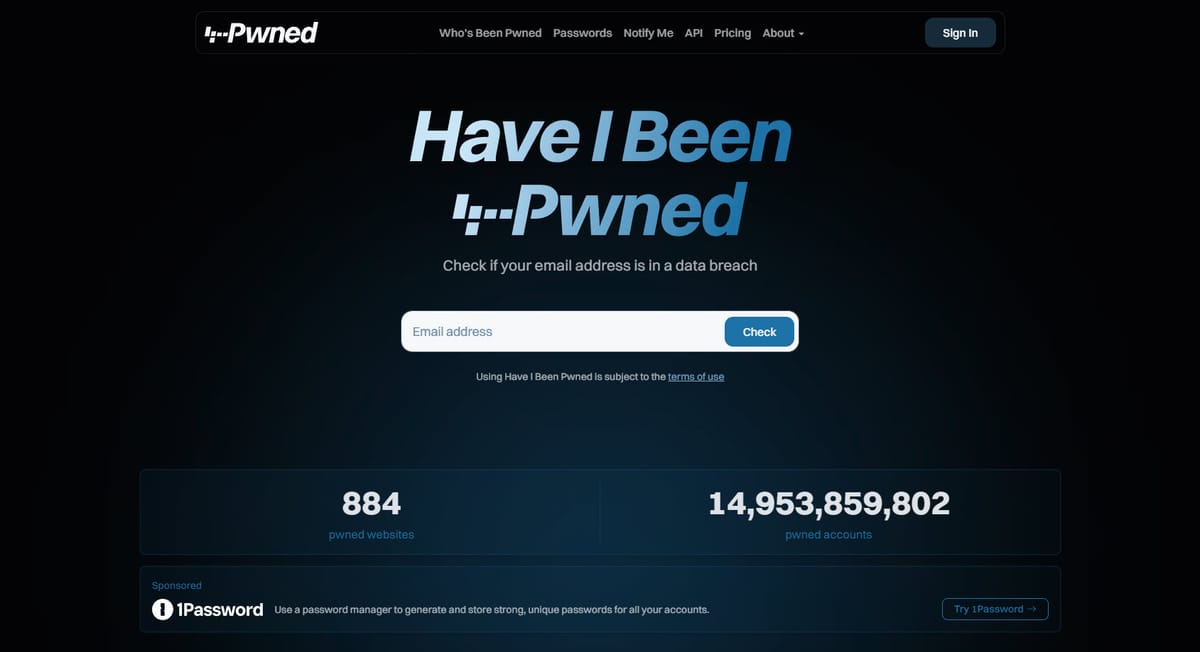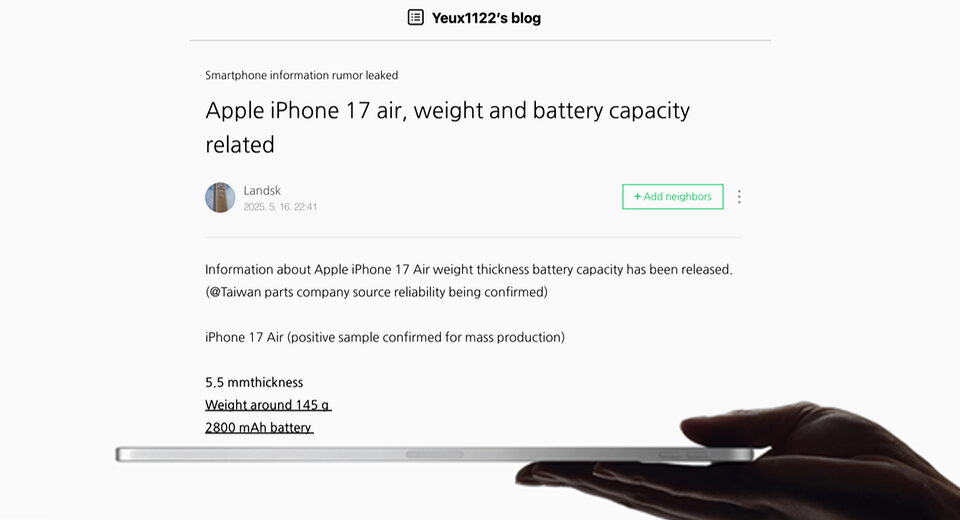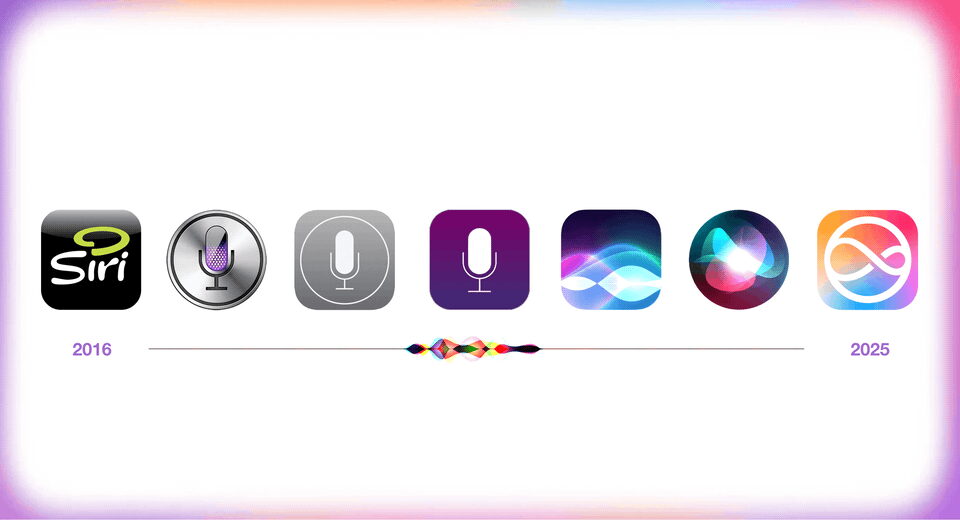Have I Been Pwned 2.0 is Now Live

This has been a very long time coming, but finally, after a marathon effort, the brand new Have I Been Pwned website is now live!

Feb last year is when I made the first commit to the public repo for the rebranded service, and we soft-launched the new brand in March of this year. Over the course of this time, we've completely rebuilt the website, changed the functionality of pretty much every web page, added a heap of new features, and today, we're even launching a merch store 😎
Let me talk you through just some of the highlights, strap yourself in!
The Search
The signature feature of HIBP is that big search box on the front page, and now, it's even better - it has confetti!
Well, not for everyone, only about half the people who use it will see a celebratory response. There's a reason why this response is intentionally jovial, let me explain:
As Charlotte and I have travelled and spent time with so many different users of the service around the world, a theme has emerged over and over again: HIBP is a bit playful. It's not a scary place emblazoned with hoodies, padlock icons, and fearmongering about "the dark web". Instead, we aim to be more consumable to the masses and provide factual, actionable information without the hyperbole. Confetti guns (yes, there are several, and they're animated) lighten the mood a bit. The alternative is that you get the red response:
There was a very brief moment where we considered a more light-hearted treatment on this page as well, but somehow a bit of sad trombone really didn't seem appropriate, so we deferred to a more demure response. But now it's on a timeline you can scroll through in reverse chronological order, with each breach summarising what happened. And if you want more info, we have an all-new page I'll talk about in a moment.
Just one little thing first - we've dropped username and phone number search support from the website. Username searches were introduced in 2014 for the Snapchat incident, and phone number searches in 2021 for the Facebook incident. And that was it. That's the only time we ever loaded those classes of data, and there are several good reasons why. Firstly, they're both painful to parse out of a breach compared to email addresses, which we simply use a regex to extract (we've open sourced the code that does this). Usernames are a string. Phone numbers are, well, it depends. They're not just numbers because if you properly internationalise them (like they were in the Facebook incident), they've also got a plus at the front, but they're frequently all over the place in terms of format. And we can't send notifications because nobody "owns" a username, and phone numbers are very expensive to send SMSs to compared to sending emails. Plus, every other incident in HIBP other than those two has had email addresses, so if we're asking "have I been pwned?" we can always answer that question without loading those two hard-to-parse fields, which usually aren't present in most breaches anyway. When the old site offered to accept them in the search box, it created confusion and support overhead: "why wasn't my number in the [whatever] breach?!". That's why it's gone from the website, but we've kept it supported on the API to ensure we don't break anything... just don't expect to see more data there.
The Breach Page
There are many reasons we created this new page, not least of which is that the search results on the front page were getting too busy, and we wanted to palm off the details elsewhere. So, now we have a dedicated page for each breach, for example:
That's largely information we had already (albeit displayed in a much more user-friendly fashion), but what's unique about the new page is much more targeted advice about what to do after the breach:
I recently wrote about this section and how we plan to identify other partners who are able to provide appropriate services to people who find themselves in a breach. Identity protection providers, for example, make a lot of sense for many data breaches.
Now that we're live, we'll also work on fleshing this page out with more breach and user-specific data. For example, if the service supports 2FA, then we'll call that out specifically rather than rely on the generic advice above. Same with passkeys, and we'll add a section for that. A recent discussion with the NCSC while we were in the UK was around adding localised data breach guidance, for example, showing folks from the UK the NCSC logo and a link to their resource on the topic (which recommends checking HIBP 🙂).
I'm sure there's much more we can do here, so if you've got any great ideas, drop me a comment below.
The Dashboard
Over the course of many years, we introduced more and more features that required us to know who you were (or at least that you had access to the email address you were using). It began with introducing the concept of a sensitive breach during the Ashley Madison saga of 2015, which meant the only way to see your involvement in that incident was to receive an email to the address before searching. (Sidenote: There are many good reasons why we don't do that on every breach.) In 2019, when I put an auth layer around the API to tackle abuse (which it did beautifully!) I required email verification first before purchasing a key. And more things followed: a dedicated domain search dashboard, managing your paid subscription and earlier this year, viewing stealer logs for your email address.
We've now unified all these different places into one central dashboard:
From a glance at the nav on the left, you can see a lot of familiar features that are pretty self-explanatory. These combine relevant things for the masses and those that are more business-oriented. They're now all behind the one "Sign In" that verifies access to the email address before being shown. In the future, we'll also add passkey support to avoid needing to send an email first.
The dashboard approach isn't just about moving existing features under one banner; it will also give us a platform on which to build new features in the future that require email address verification first. For example, we've often been asked to provide people with the ability to subscribe their family's email addresses to notifications, yet have them go to a different address. Many of us play tech support for others, and this would be a genuinely useful feature that makes sense to place at a point where you've already verified your email address. So, stay tuned for that one, among many others.
The Domain Search Feature
More time went into this one feature than most of the other ones combined. There's a lot we've tried to do here, starting with a much cleaner list of verified domains:
The search results now give a much cleaner summary and add filtering by both email address and a hotly requested new feature - just the latest breach (it's in the drop-down):
All those searches now just return JSON from APIs and the whole dashboard acts as a single-page app, so everything is really snappy. The filtering above is done purely client-side against the full JSON of the domain search, an approach we've tested with domains of over a quarter million breached email addresses and still been workable (although arguably, you really want that data via the API rather than scrolling through it in a browser window).
Verification of domain ownership has also been completely rewritten and has a much cleaner, simpler interface:
We still have work to do to make the non-email verification methods smoother, but that was the case before, too, so at least we haven't regressed. That'll happen shortly, promise!
The API
First things first: there have been no changes to the API itself. This update doesn't break anything!
There's a discussion over on the UX rebuild GitHub repo about the right way to do API documentation. The general consensus is OpenAPI and we started going down that route using Scalar. In fact, you can even see the work Stefan did on this here at haveibeenpwned.com/scalar:
It's very cool, especially the way it documents samples in all sorts of different languages and even has a test runner, which is effectively Postman in the browser. Cool, but we just couldn't finish it in time. As such, we've kept the old documentation for now and just styled it so it looks like the rest of the site (which I reckon is still pretty slick), but we do intend to roll to the Scalar implementation when we're not under the duress of such a big launch.
The Merch Store
You know what else is awesome? Merch! No, seriously, we've had so many requests over the years for HIBP branded merch and now, here we are:
We actually now have a real-life merch store at merch.haveibeenpwned.com! This was probably the worst possible use of our time, considering how much mechanical stuff we had to do to make all the new stuff work, but it was a bit of a passion project for Charlotte, so yeah, now you can actually buy HIBP merch. It's all done through Teespring (where have I heard that name before?!) and everything listed there is at cost price - we make absolutely zero dollars, it's just a fun initiative for the community 🙂
We did try out their option for stickers too, but they fell well short of what we already had up with our little one-item store on Sticker Mule so for now, that remains the go-to for laptop decorations. Or just go and grab the open source artwork and get your own printed from wherever you please.
The Nerdy Bits
We still run the origin services on Microsoft Azure using a combination of the App Service for the website, "serverless" Functions for most APIs (there are still a few async ones there that are called as a part of browser-based features), SQL Azure "Hyperscale" and storage account features like queues, blobs and tables. Pretty much all the coding there is C# with .NET 9.0 and ASP.NET MVC on .NET Core for the web app. Cloudflare still plays a massive role with a lot of code in workers, data in R2 storage and all their good bits around WAF and caching. We're also now exclusively using their Turnstile service for anti-automation and have ditched Google's reCAPTCHA completely - big yay!
The front end is now latest gen Bootstrap and we're using SASS for all our CSS and TypeScript for all our JavaScript. Our (other) man in Iceland Ingiber has just done an absolutely outstanding job with the interfaces and exceeded all our expectations by a massive margin. What we have now goes far beyond what we expected when we started this process, and a big part of that has been Ingiber's ability to take a simple requirement and turn it into a thing of beauty 😍 I'm very glad that Charlotte, Stefan and I got to spend time with him in Reykjavik last month and share some beers.
We also made some measurable improvements to website performance. For example, I ran a Pingdom website speed test just before taking the old one offline:
And then ran it over the new one:
So we cut out 28% of the page size and 31% of the requests. The load time is much of a muchness (and it's highly variable at that), but having solid measures for all the values in the column on the right is a very pleasing result. Consider also the commentary anyone in web dev would have seen over the years about how much bigger web pages have become, and here we are shaving off solid double-digit percentages 11 years later!
Finally, anything that could remotely be construed as tracking or ad bloat just isn't there, because we simply don't do any of that 🙂 In fact, the only real traffic stats we have are based on what Cloudflare sees when the traffic flows through their edge nodes. And that 1Password product placement is, as it's always been, just text and an image. We don't even track outbound clicks, that's up to them if they want to capture that on the landing page we link to. This actually makes discussions such as we're having with identity theft companies that want product placement much harder as they're used to getting the sorts of numbers that invasive tracking produces, but we wouldn't have it any other way.
The AI
I wanted to make a quick note of this here, as AI seems to be either constantly overblown or denigrated. Either it's going to solve the world's problems, or it just produces "slop". I used Chat GPT in particular really extensively during this rebuild, especially in the final days when time got tight and my brain got fried. Here are some examples where it made a big difference:
I'm using Bootstrap icons from here: https://icons.getbootstrap.com/
What's a good icon to illustrate a heading called "Index"?This was right at the 11th hour when we realised we didn't have time to implement Scalar properly, and I needed to quickly migrate all the existing API docs to the new template. There are over 2,000 icons on that page, and this approach meant it took about 30 seconds to find the right one, each and every time.
We killed off some pages on the old site, but before rolling it over, I wanted to know exactly what was there:
Write me a PowerShell script to crawl haveibeenpwned.com and write out each unique URL it findsAnd then:
Now write a script to take all the paths it found and see if they exist on stage.haveibeenpwned.com
It found good stuff too, like the security.txt file I'd forgotten to migrate. It also found stuff that never existed, so it's the usual "trust, but verify" situation.
And just a gazillion little things where every time I needed anything from some CSS advice to configuring Cloudflare rules to idiosyncrasies in the .NET Core web app, the correct answer was seconds away. I'd say it was right 90% of the time, too, and if you're not using AI aggressively in your software development work now (and I'm sure there are much better ways, too) I'm pretty confident in saying "you're doing it wrong".
The Journey Here
It's hard to explain how much has gone into this, and that goes well beyond just what you see in front of you on the website today. It's seemingly little things, like minor revisions to the terms of use and privacy policy, which required many hours of time and thousands of dollars with lawyers (just minor updates to how we process data and a reflection of new services such as the stealer logs).
We pushed out the new site in the wee hours of Sunday morning my time, and almost everything went well:
One or two little glitches that we've fixed and pushed quickly, that's it. I've actually waited until now, 2 days after going live, to publish this post just so we could iron out as much stuff as possible first. We've pushed more than a dozen new releases already since that time, just to keep iterating and refining quickly. TBH, it's been a bit intense and has been an enormously time-consuming effort that's dominated our focus, especially over the last few weeks leading up to launch. And just to drive that point home, I literally got a health alert first thing Monday morning:
Nothing like empirical data to make a point! That last weekend when we went live was especially brutal; I don't think I've devoted that much high-intensity time to a software release for decades.
Have I Been Pwned has been a passion for a quarter of my life now. What I built in 2013 was never intended to take me this far or last this long, and I'm kinda shocked it did if I'm honest. I feel that what we've built with this new site and new brand has elevated this little pet project into a serious service that has a new level of professionalism. But I hope that in reading this, you see that it has maintained everything that has always been great about the service, and I'm so glad to still be here writing about it today in the 205th blog post with that tag. Thanks for reading, now go and enjoy the new website 😊 Have I Been Pwned
What's Your Reaction?
 Like
0
Like
0
 Dislike
0
Dislike
0
 Love
0
Love
0
 Funny
0
Funny
0
 Angry
0
Angry
0
 Sad
0
Sad
0
 Wow
0
Wow
0








































